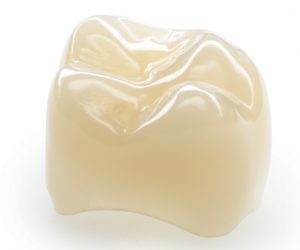There are reasons why stress matters, and toothwear is one of them
Featured Products Promotional FeaturesPosted by: Dental Design 22nd January 2022

Toothwear can cause big problems for patients, so prevention and early interception are needed, alongside ways to treat it without damaging more of the already-compromised enamel.
Non-carious surface loss has a variety of causes, some mechanical and others chemical. Cumulative wear and tear of the enamel is to be expected as we get older, but not every cause of wear is age-related as reasons can include stress, poor oral hygiene and diet. The type of tooth wear a patient presents with often points to what is behind it and what their treatment options are.
Toothwear can lead to aesthetic issues, when the teeth take on a dull and discoloured look, and this might be what your patients notice first. People desire an aesthetically pleasing smile and we’ve read so much about how the value of one has risen exponentially with our collectively increased screen time. Worn teeth might become shorter too.
Other impacts of tooth wear are pain and/or sensitivity, also problems with chewing food.[i] Inefficient mastication, as well as being a functional issue, can mean social embarrassment for the patient. Excessive wear may cause cracks and fractures, particularly in cases of bruxism.
Practices seeing the impact of stress
Bruxism, where there is involuntary clenching tooth-grinding and clenching of the jaw, often at night, is a mechanical cause of toothwear with an established link to stress. It is also linked some of the medications used to manage stress and depression, such as selective serotonin reuptake inhibitors (SSRIs), also sleep disorders (which often, although not always, go hand-in-hand with being in poor psycho-emotional health).[ii]Recreational drugs can also cause grinding.
 Stress has become more widespread among the UK population and a letter to the BMJ earlier this year wrote about “pandemic bruxism”.[iii] Dentists, the letter said, are seeing an “increase in patients presenting with features of toothwear attributed to grinding and jaw clenching,” primarily pain and chipped or cracked teeth. Dental practices in the US have observed the same, also blaming the rise on Coronavirus-induced stress.[iv] As well as oral health problems, bruxism can lead to headaches, exacerbating the state of mental tension.
Stress has become more widespread among the UK population and a letter to the BMJ earlier this year wrote about “pandemic bruxism”.[iii] Dentists, the letter said, are seeing an “increase in patients presenting with features of toothwear attributed to grinding and jaw clenching,” primarily pain and chipped or cracked teeth. Dental practices in the US have observed the same, also blaming the rise on Coronavirus-induced stress.[iv] As well as oral health problems, bruxism can lead to headaches, exacerbating the state of mental tension.
During diagnosis and treatment planning, taking a patient’s detailed social history can help to establish if they are suffering from stress. As stress and anxiety can have such impact on oral health (and vice versa), including being less motivated in good hygiene behaviours, the pandemic has made the question of the dental practice’s role in supporting mental wellbeing a more urgent one to answer.[v] In years to come, could more practitioners from other disciplines be located inside the practice? Alternative therapies have proved useful for helping phobic patients, for example – why not those who are suffering from stress and anxiety? Will dental hygienists and dental therapists become trained in some of these therapies? In the future, building general knowledge about stress and anxiety, the impact on oral health and non-medical interventions will become important for dental teams who want to offer an elevated package of care.

After diagnosing bruxism, you might recommend a mouth guard to be worn at night, to prevent and minimise further damage, alongside supporting the patient with regulating their stress levels. If restorative treatment is required, “consent and contingency planning” are fundamental; the patient must know and understand their role in keeping the result of dental work stable.[vi] The most obvious issue is if, post-restoration, they resume the behaviours that led to the toothwear. When dealing with something stress-related, there is always an element of the unknown, too. A patient who has learned to cope well with stress, and who has kept their grinding and clenching under control, may suddenly find themselves triggered and the techniques they were using are no longer effective. Hence the need for patients to understand that this is an ongoing journey, with an agreed contingency, should the restoration fail.
Treating toothwear in patients with bruxism is not simple, as there many factors that can complicate the outcome, and they may require anything from a crown to a whole-mouth rehabilitation. Despite the challenge these cases present, quality materials, combined with the latest minimally invasive techniques, support predictable outcomes that can, with ongoing care and maintenance, endure. COLTENE offers clinicians a range of products for strong, enduring and beautiful restorations, including BRILLIANT Crios, a reinforced composite bloc that can be used with CAD/CAM solutions and is particularly recommended for bruxist patients as it has exceptional shock absorbing qualities. COLTENE also offers materials for superior bonding and a range of options for single-tooth restorations as well more complex cases.
Grinding isn’t just an annoying habit, it can have major functional and aesthetic implications, despite the non-dental reasons behind it. A patient-focussed, holistic approach is likely to shape the future of dentistry and successfully treating habitual bruxists underlines how crucial it is for dental teams to understand the impact of stress on oral health.
Nicolas Coomber COLTENE National Account & Marketing Manager
For more on COLTENE, visit www.coltene.com,
[i] Mehta SB, Banerji S, Millar BJ, Suarez-Feito JM. Current concepts on the management of tooth wear: part 1. Assessment, treatment planning and strategies for the prevention and the passive management of tooth wear. British Dental Journal. 2012 Jan 14; 212 (1): 17-27.
[ii] Teeth grinding (bruxism) overview. NHS, link: https://www.nhs.uk/conditions/teeth-grinding/
[iii] Dadnam, D., Dadnam, C. & Al-Saffar, H. Pandemic bruxism. Br Dent J 230, 271 (2021). https://doi.org/10.1038/s41415-021-2788-3
[iv] Br Dent J 230, 271 (2021).
[v] Deinzer R, Granrath N, Spahl M, Linz S, Waschul B, Herforth A. Stress, oral health behaviour and clinical outcome. British Journal of Health Psychology. 2005 May;10 (2):269-83.
[vi] Mehta, S., Banerji, S., Millar, B. et al. Current concepts on the management of tooth wear: part 4. An overview of the restorative techniques and dental materials commonly applied for the management of tooth wear. Br Dent J 212, 169–177 (2012). https://doi.org/10.1038/sj.bdj.2012.137










